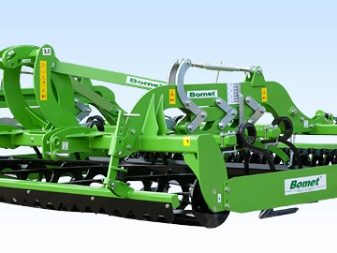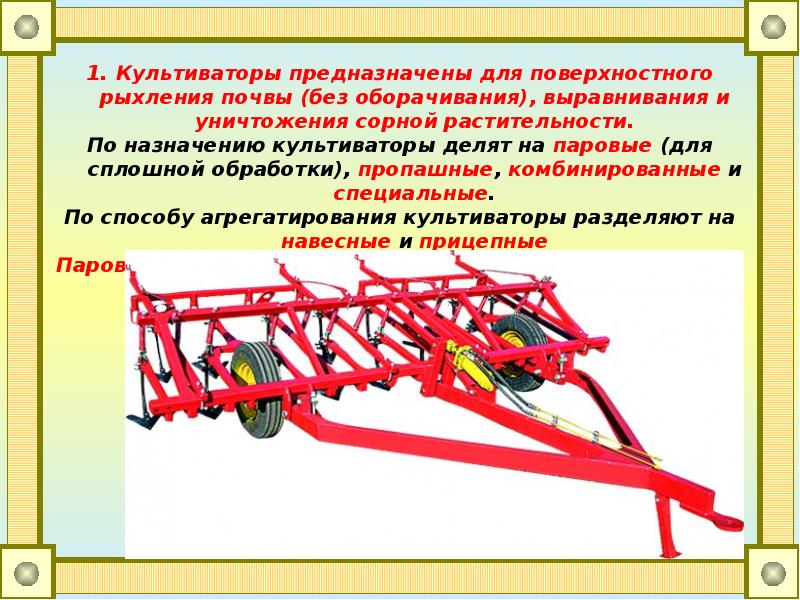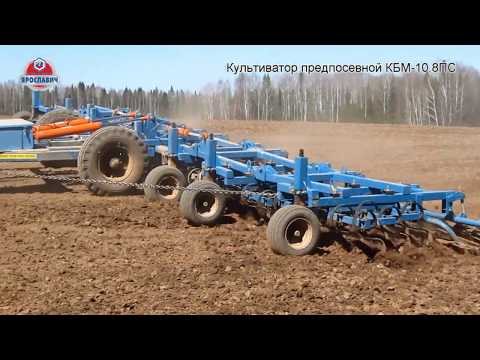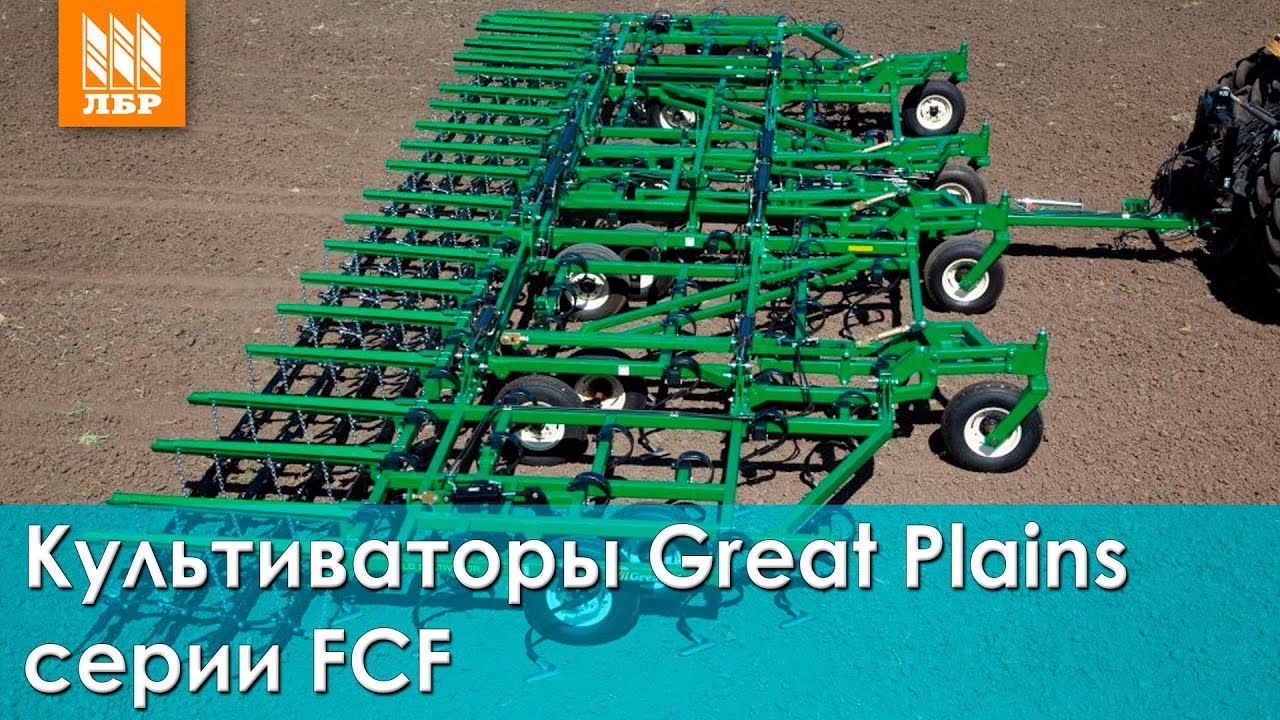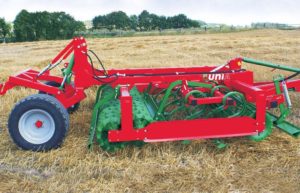Finishing
The seedbed cultivator is the lightest machine. Its task is to create not only a leveled surface, but also a fine crumbly soil structure. Such units are designed for surface (2-10 cm) tillage. These include, among other things, "compacters" - cultivators with pointed tines and leveling bars, equipped with crumbling or cross-skill rollers, explains a specialist of the Rostselmash company.
Such machines cultivate the soil to the depth of the sowing bed, loosen the soil, crumbling clods, providing continuous cultivation and creating an evenly deep seeding horizon.
Accordingly, the requirements for finishing machines are higher. For example, crops such as sugar beets require a fluffy, crumbly soil structure with a compacted and clear seeding bed and are very critical to the quality of pre-sowing treatment, says Aleksey Stern. Small-seeded crops such as rape are no less demanding, for which it is required to cultivate the soil to a depth of only 2 cm.
In addition, these machines must provide the most complete weed cut, which means that the distance between the tines must be completely covered by the tine. If the distance between the posts is 15 cm, then the paw must be at least 15 cm in order to ensure 100% overlap, Alexey Stern gives an example.
Presowing cultivators are designed to work only on pre-treated soil and at a shallow depth (maximum 12 cm), emphasizes Nikolay Gapon, Tillage and Sowing Product Manager of AGCO-RM. However, one of the mistakes customers make is over-sinking the machine. Hence, the increased load on the struts, the tractor and the engine, increased fuel consumption and frame overload, which is fraught with its breakdown.
The optimal work of the presowing cultivator, according to Nikolai Gapon, should be carried out at a sowing depth (usually no more than 6-8 cm). At the same time, Pavel Vilchinsky notes that disc machines cope worse with seedbed preparation than paw machines.
In row spacing and stripes
Separate are cultivators for processing row spacings, the task of which is to work strictly in the place where there is no sowing, and not to enter the row.
For such units, it is important that the distance between the tines does not clearly correspond to the row spacing, and that there are limiting plates or covers for adjusting the width, notes Alexey Stern
An even more interesting type of cultivator - a strip cultivator operating using the Strip Till technology (only the strips into which sowing will be carried out are processed) on row crops - also has a number of specific requirements that should be paid attention to when choosing
In such units, it is important to simultaneously apply fertilizers, emphasizes Nikolai Gapon, as well as the presence of special limiting turbodisks on the sides and a roller, which has the goal of not only reconsolidation, but also breaking lumps and forming a ridge
In such units, it is important to simultaneously apply fertilizers, emphasizes Nikolai Gapon, as well as the presence of special limiting turbo disks on the sides and a roller, which has the goal of not only reconsolidation, but also breaking lumps and forming a ridge. But even more important when using such technologies is the availability of navigation satellite equipment that records deviations with an accuracy of 2-3 cm.As Nikolai Gapon explains, when sowing row crops in spring, the seeder should go along the same lanes where fertilizers were applied since autumn
Otherwise, the meaning of technology is lost.
But even more important when using such technologies is the availability of navigation satellite equipment that records deviations with an accuracy of 2-3 cm.As Nikolai Gapon explains, when sowing row crops in spring, the seeder should go along the same lanes where fertilizers were applied in the fall. Otherwise, the meaning of technology is lost.
Configuration errors: the main thing is parallel
The main requirement for cultivator settings is horizontal alignment. As Vyacheslav Veklenko explains, the machine frame in working order must be parallel to the supporting surface. In the presence of angles in relation to the ground, unnecessary loads appear in the machine, the working bodies wear out faster, and most importantly, the processing is uneven, explains Ilya Tsarkov.
And Prokhor Darmov from the Rostselmash company advises to carry out the adjustment on flat concrete sites, which, according to his observations, unfortunately, are quite a rare phenomenon on farms
According to a specialist, almost no attention is paid to the pressure in the wheels. But it often happens that differently inflated wheels set the frame skew and affect the uniformity of the working depth.
In addition, the machine can "drift" to the side, resulting in ridges during processing.
If the unit is multi-section, then the parallelism must be adjusted in each section, emphasizes Nikolai Gapon.
User manual
Before using the technique, you should carefully study the instructions, since the quality of work depends on the technical aspects of the device.
For example, according to the instructions of the "Mole" garden cultivator, the model is equipped with a 4-stroke gasoline engine of 2.6 liters or more, with a volume of 60 cubic meters. centimeters and 6000 rpm. The device has a steering wheel, with the help of which control is carried out, mechanisms for clutching and controlling the carburetor ("K-60V"), an electronic contactless ignition engine.

The instruction provides for the implementation of earthworks by the apparatus using attachments.
- Treatment of the soil cover due to blade cutting mills applied to the shafts. In the process of work, the support rises, and the opener is taken to work, measuring the required depth. The cutters rotate due to the operation of the engine. The standard set includes external and internal milling cutters.
- The cultivation of weed lands is carried out with floor milling cutters, also included in the kit. If necessary, purchase discs for plowing planted crops.
- Root crops are spud with a special nozzle intended for these purposes. According to the instructions, it is placed on the opener, spud without cutters. Instead of them, lugs are installed (not included in the kit).
- With the help of these disks and diggers, they also dig out root crops and harvest.
- They cultivate the land with a plow.
- They mow the grass with a special mowing machine.
- Pumping out liquids.
- With the help of a cart or trailer, loads weighing up to 200 kg are transported.

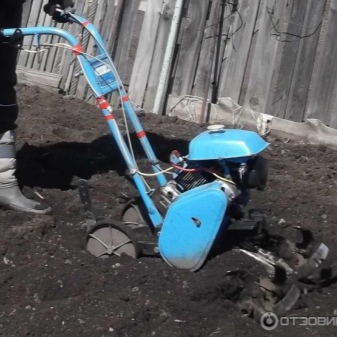
The engine must be run in immediately after purchase. The instructions indicate the running-in period, when the parts enter the operating mode, rub against each other.
When replacing the engine, the advice is to follow the instructions strictly. You can do this yourself by fulfilling all the conditions of this replacement. First you need to drain the oil and disconnect the cable. Then, after unscrewing a few nuts, dismantle the motor. After trying on a new one, make holes for fastening (if necessary).
The new engine is installed and set up for operation. Often they use Chinese engines instead of "native" ones. According to the instructions, you can repair and adjust the mechanism yourself, install new candles and other spare parts if necessary, as well as maintain, store and operate the cultivator.


For information on how to choose a cultivator, see the next video.
Weight classification
It is the severity that is one of the main criteria when sorting cultivators.Their weight can vary from 9 to 40 kg. Even women and high school students can easily handle the lightest machines. Not every professional farmer can handle the most difficult ones. The ultra-light category includes motor cultivators, the mass of which does not exceed 15 kg, and the engine produces a maximum of 1.5 liters. with.
Ultra-light cultivators can loosen the ground by no more than 8 cm. It is recommended to use them for a flower bed, for a flower garden and similar purposes. Thanks to the small working width (not exceeding 30 cm), this type of cultivator can work even with narrow aisles and hard-to-reach places.

The power plant in them works either in a two-stroke or in a four-stroke mode. The second option is preferable. As for light cultivators, this group includes machines weighing no more than 40 kg, capable of developing power up to 4.5 liters. with. Increasing the working width up to 40-50 cm immediately expands the possibilities of farmers. After all, the overall performance increases by 50-100% (compared to ultra-light devices).
If you install a small hiller, you can easily and quickly cut furrows for planting any plants. But we must remember that light cultivators can "bounce" when entering the ground. Their mass is not enough to stably stay in one position. Cultivators of the middle category weigh from 45 to 60 kg. They are equipped with motors with a total capacity of 4 to 6 liters. with.


In addition to increasing stability, these machines are good because of the larger covered swath. The depth of cultivation of the land is increasing - it can reach 25-28 cm. But it is worth considering that in narrow places and in hard-to-reach areas, such a technique does its job poorly. On medium-sized cultivators, four-stroke motors are usually installed. The use of both hillers and small plows is allowed.
The heavy class includes motor cultivators that weigh over 60 kg and develop a power of 6 liters. with. and more. All such cars are equipped by default with four-stroke engines and a full-fledged gearbox. This helps to increase the functionality of the technique. The available range of trailed and attached equipment is expanding. Even the processing of large vegetable gardens becomes possible.
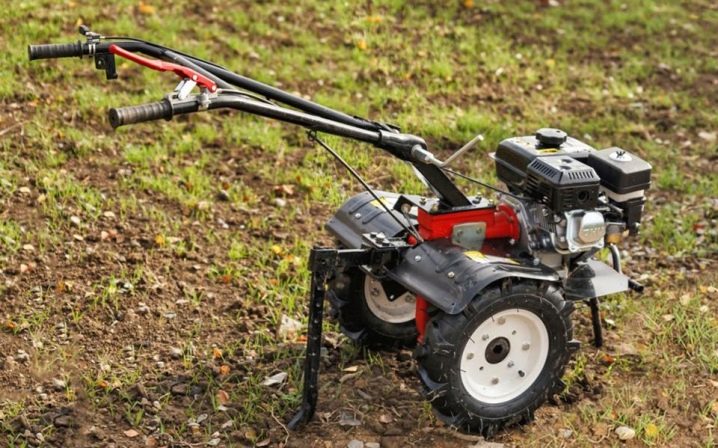
What do you need to know about hardware compatibility?
The ideal solution to the problem is to purchase additional attachments complete with a cultivator. But unnecessary details lead to a significant increase in the cost of the unit, so many summer residents prefer to acquire additional accessories gradually.
Each model of a motor-cultivator has a list of additional equipment developed by the manufacturer specifically for it. But it is not always possible to buy just such hinges, so you can find out about the compatibility of fixtures from other models and purchase those that are suitable in terms of characteristics and parameters.
Do you use attachments for a cultivator?
Constantly! I want to try
So that after buying the hinges you do not have to waste time replacing them, it is worth considering the following recommendations of experienced summer residents and specialists:
- When purchasing a cultivator, immediately find out what additional equipment manufacturers offer to it. Technically, even a low-power unit can be equipped with a plow or a light potato digger. But the motor may not have enough strength to attach a trailer, potato planter, cutters, hillers, lugs. It will overheat and the cultivator will quickly fail.
- It's not always worth buying branded attachments right away. Oftentimes, original awnings are expensive and can be replaced with other compatible models.
- Do not buy all possible weights at once. Try to work with a cultivator, evaluate its capabilities and decide what exactly you will need. Consider the interchangeability of parts. For example, you can use a plow to plant potatoes. Therefore, it is not necessary to buy a potato planter if everything works out without it.
The use of attachments significantly expands the possibilities of using motor-cultivators in summer cottages. A fully equipped machine becomes a reliable assistant for the gardener and can significantly reduce labor costs when obtaining a crop. When selecting canopies, it is imperative to take into account the characteristics of the cultivated soil and the power of the cultivator motor.
- Which cultivator to choose: an overview of popular models of electric and gasoline cultivators from light to heavy, their characteristics, pros and cons
- Miracle shovel for the garden - we dig the ground in the country without effort: the principle and rules of operation of a manual cultivator based on
- Lawn scarifier: which is better - electric, gasoline or manual, rating of models, their pros and cons
- Lawn verticutter: review and popularity rating of the best gasoline and electric models
Conclusion
It is so good that in our time so many techniques have been invented to facilitate labor. A motor-cultivator will do the job quickly and efficiently. It's not like swinging a shovel by hand. The main thing is to work a little and immediately choose the model of the device suitable for your situation.
Here you should be judicious and decide in advance on the power and capabilities of the device. It is worth asking whether it is easy to buy spare parts for the device you like and whether the manufacturer's service centers are far away.
How do you cultivate the land in your garden? Do you have a cultivator?





